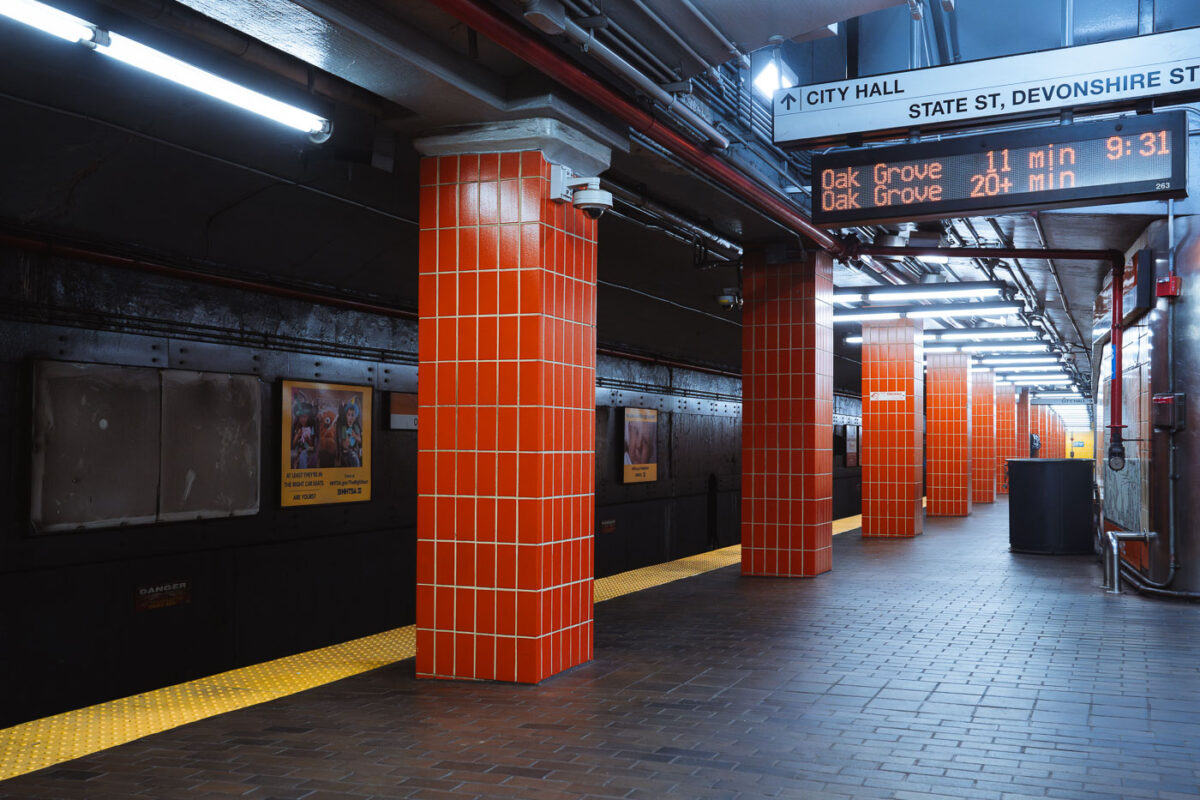
MBTA State Station
Massachusetts Bay Transportation Authority (MBTA) State Station on the Orange Line in Boston.
Explore photos and posts tagged Subway Station.

Massachusetts Bay Transportation Authority (MBTA) State Station on the Orange Line in Boston.

Inside Boston’s Park Street Station, a tiled corridor displays a Bank of America advertisement for the Boston Marathon’s charity initiative. The green and white MBTA sign directs riders toward the Green Line platforms for Copley and westbound service. Park Street—one of the oldest subway stations in the United States—sits beneath the Boston Common, serving as a major interchange for the city’s transit system since 1897.

A Metro-North Railroad train sits at a platform inside Grand Central Terminal in Manhattan. The stainless-steel cars reflect the dim lighting of the underground station, where exposed pipes and graffiti-marked beams highlight the aging infrastructure of the busy commuter hub.

A Metro-North Railroad train is seen at a station platform, its blue-and-white exterior bearing the MTA logo. The commuter rail line, operated by the Metropolitan Transportation Authority, connects New York City with suburbs across New York State and Connecticut.

A Metro-North Railroad train waits at a platform inside Grand Central Terminal in Manhattan. The concrete pillars and exposed beams of the underground station frame the tracks, where the yellow warning strip lines the edge of the platform.
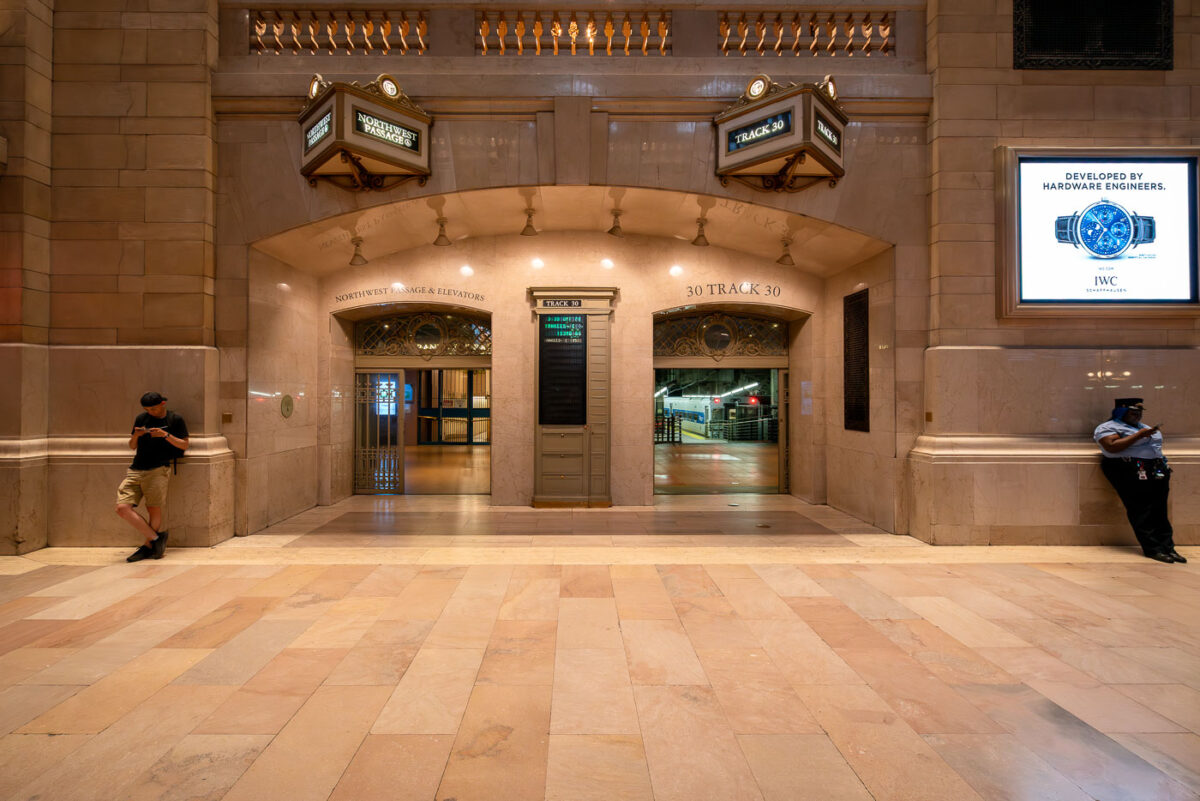
The entrance to Track 30 inside Grand Central Terminal in Manhattan is seen at night. The marble hallways of the landmark station lead to the train platforms below, as a commuter and a security officer stand near the archways beneath illuminated signs.
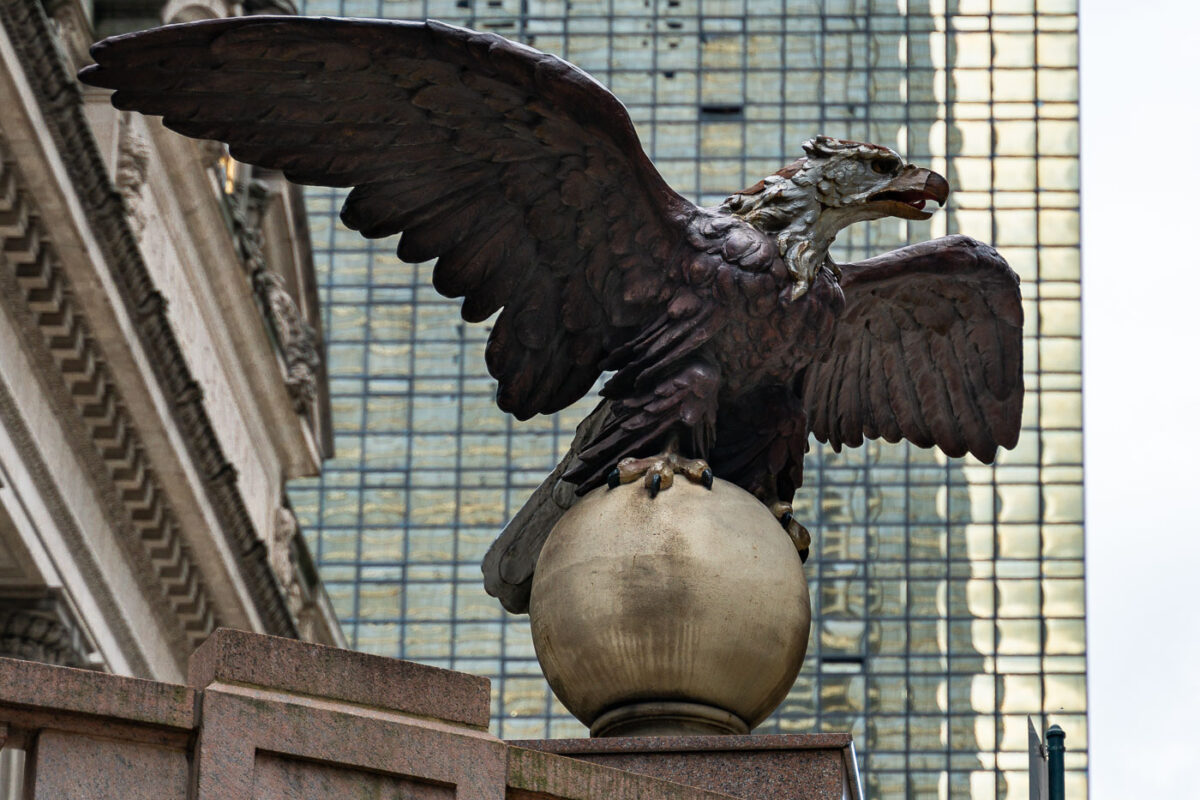
An eagle statue perched on a globe stands outside Grand Central Terminal in Manhattan. The bronze sculpture, one of several around the historic landmark, looks out over Midtown with the glass facade of the MetLife Building rising in the background.
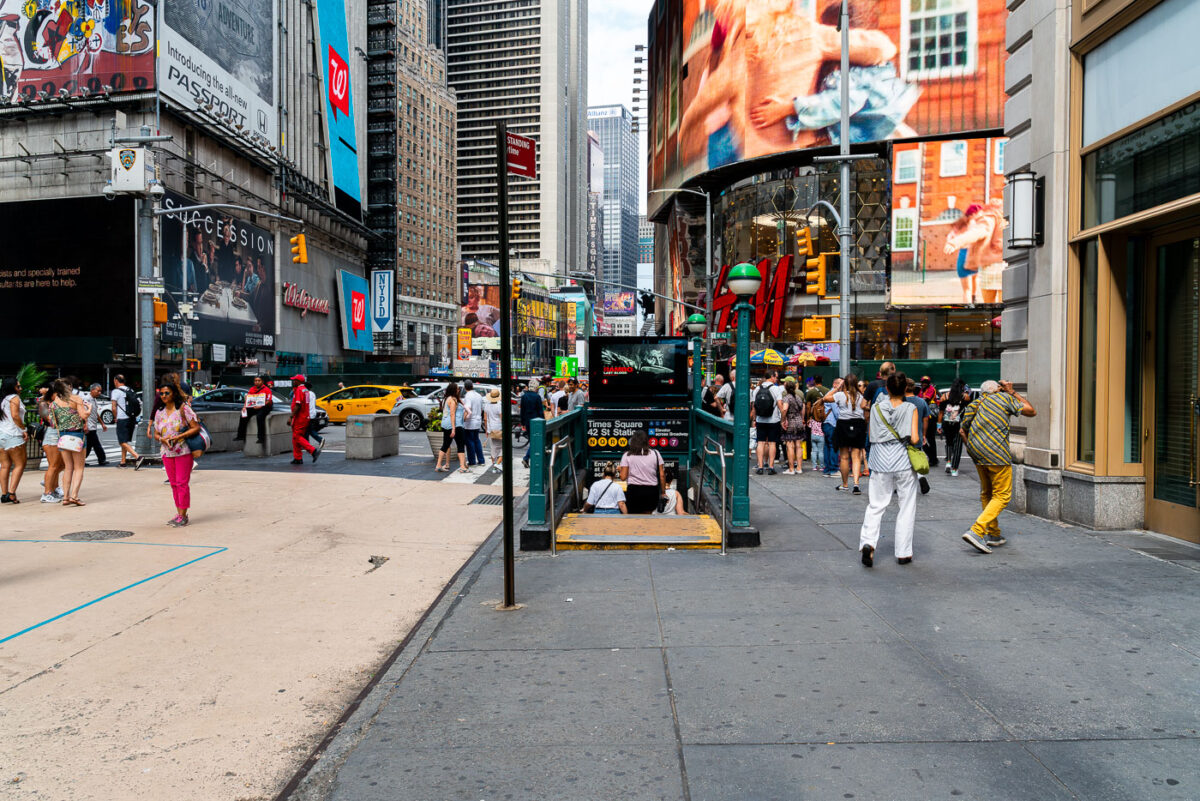
Pedestrians crowd the sidewalks around a subway entrance in Times Square, Manhattan. The 42nd Street–Times Square station, one of the busiest in New York City, connects multiple subway lines beneath the bright billboards, storefronts, and heavy traffic of the theater district.
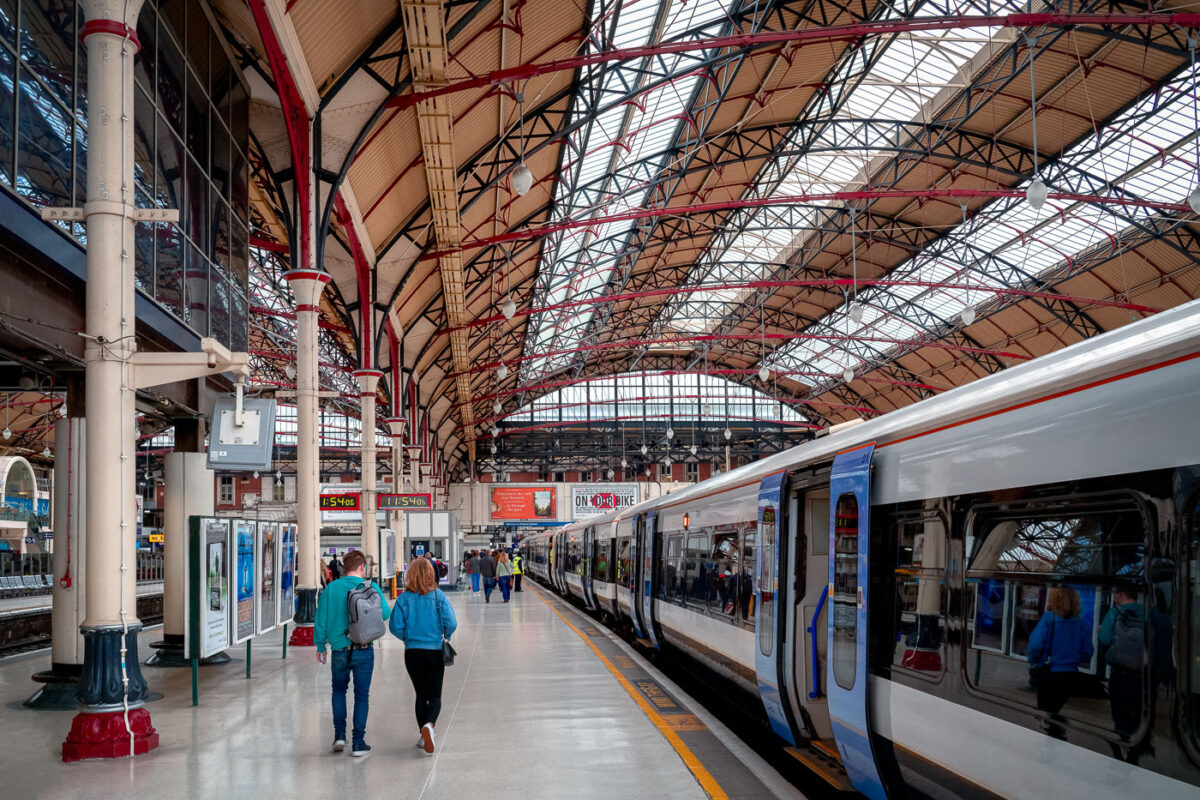
The platforms of London Victoria Station stretch beneath an ornate iron-and-glass roof, a hallmark of late 19th-century railway engineering. The intricate red and black trusses, designed for both strength and elegance, frame the soft natural light filtering through the skylights above. Commuters move toward the waiting trains of the Southern and Southeastern networks, a daily rhythm set against one of London’s most architecturally distinctive termini, where Victorian design continues to serve the modern rail era.
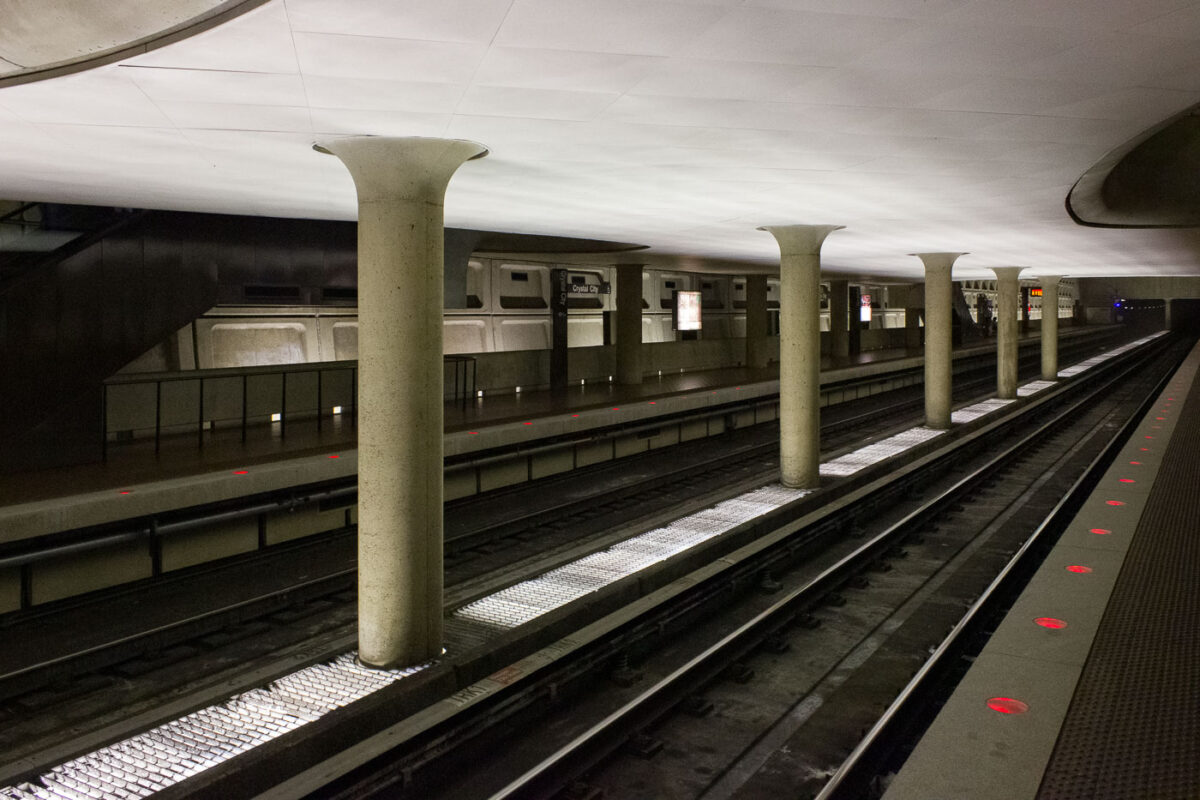
Crystal City is a side platformed Washington Metro station in the Crystal City neighborhood of Arlington, Virginia, United States. The station was opened on July 1, 1977, and is operated by the Washington Metropolitan Area Transit Authority (WMATA). Providing service for both the Blue and Yellow Lines, the station is located on 18th Street in between the Jefferson Davis Memorial Highway and South Bell Street. The station is also accessible from the underground network of shopping centers and restaurants extending beneath Crystal City.
This is the final indoor transfer point between the Blue and Yellow lines in the southbound direction. In inclement weather, commuters may prefer to transfer at Crystal City rather than at King Street–Old Town, which is outdoors.
The station is also served by the Metroway bus rapid transit line. Some Metroway buses terminate here rather than at Pentagon City station.
Source: en.wikipedia.org/wiki/Crystal_City_station_(Washington_Metro)
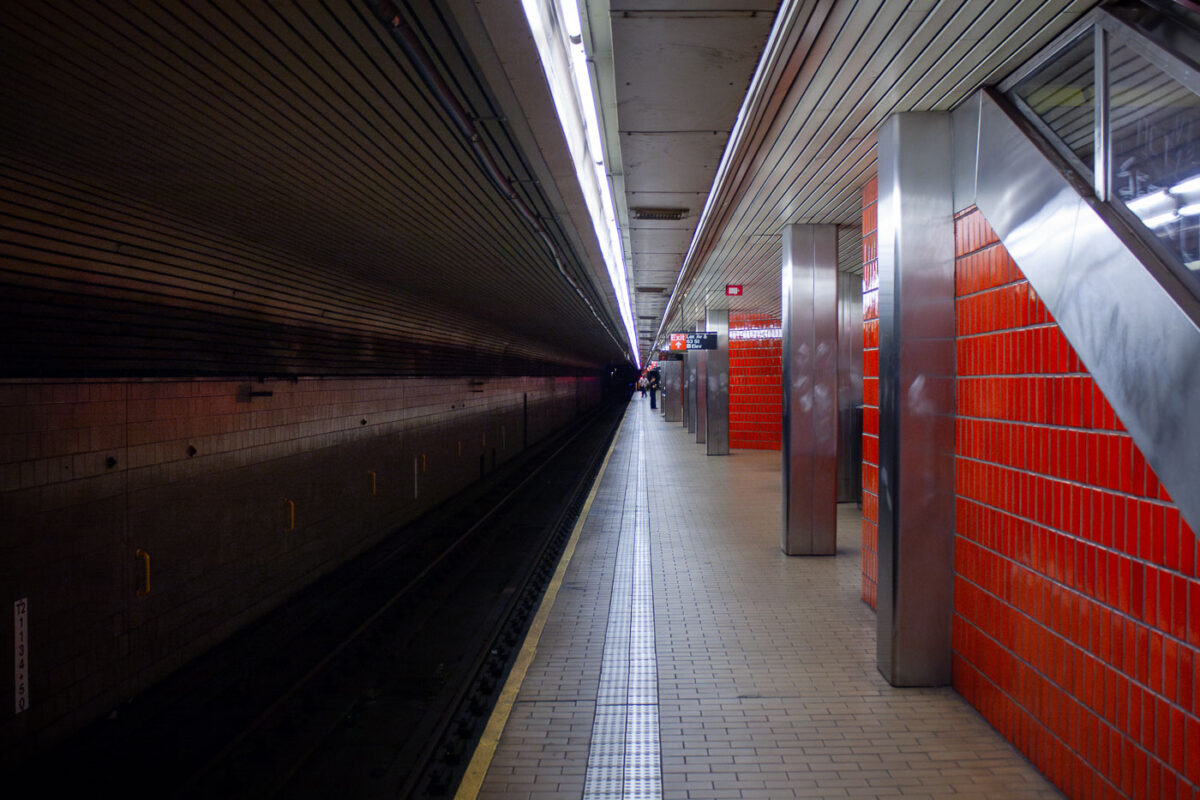
The Lexington Avenue–63rd Street station in Manhattan, part of the IND and BMT lines of the New York City Subway, is shown here in its distinctive red-tiled design. Opened in 1989 as part of the 63rd Street Tunnel project, the station serves the F and Q trains, linking the Upper East Side to Queens and the Second Avenue Subway. Its sharply linear geometry and long central platform exemplify late-20th-century transit architecture, emphasizing function and durability. The bright red glazed brick walls contrast with the metallic fixtures and fluorescent ceiling strips, creating a visual rhythm typical of New York’s underground infrastructure during the city’s major transit expansion era.
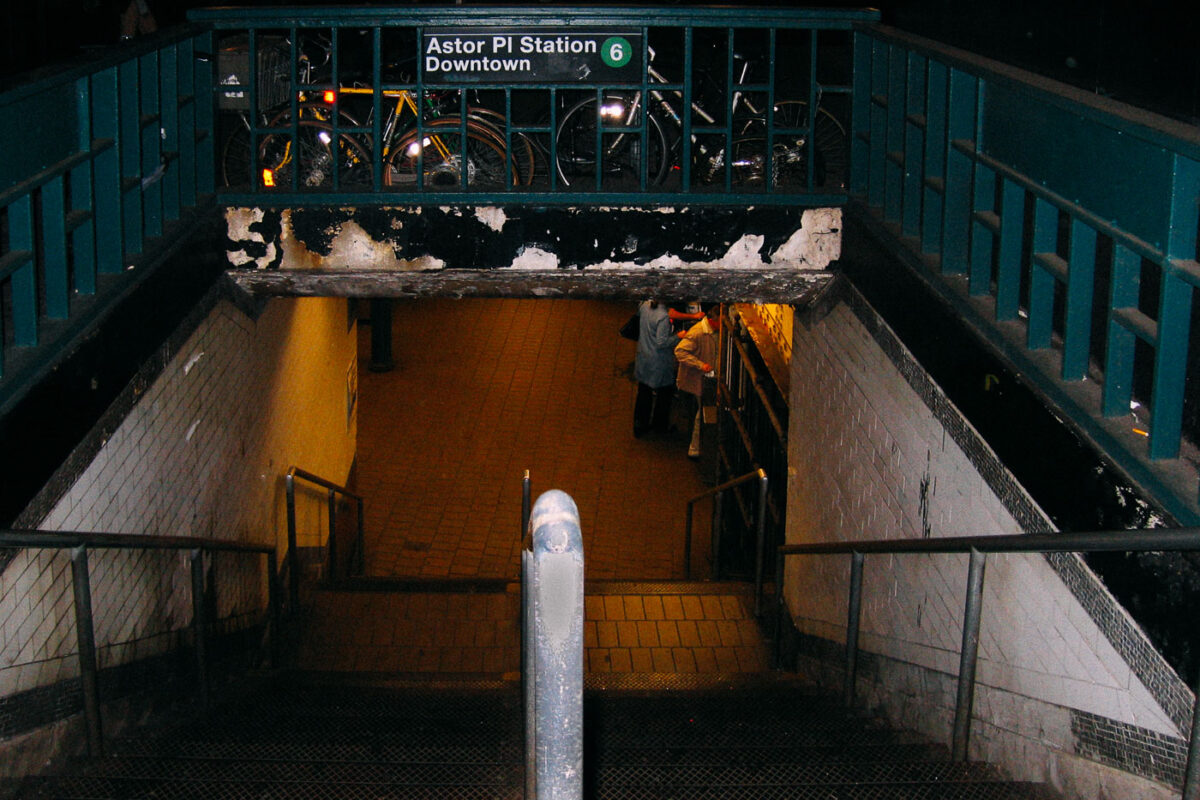
Stairs down to Astor Place subway station in New York City in May 2005